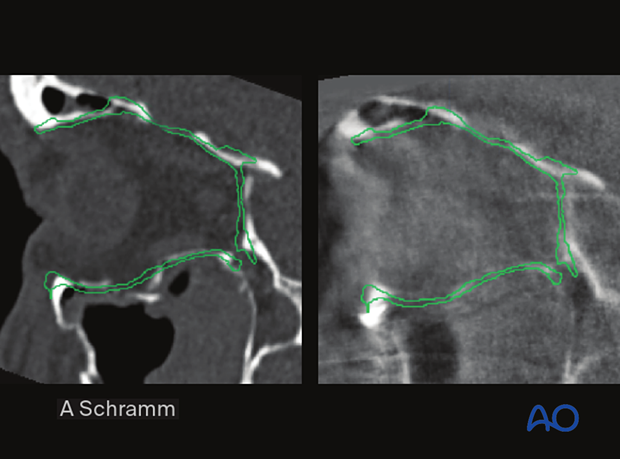CAS: virtual planning and intraoperative imaging (ORIF without orbital reconstruction)
1. Introduction
When using computer assisted surgery (CAS), reduction (and fixation if necessary) is performed according to standard procedures described in the AO Surgery Reference. CAS should be considered as an adjunct to surgical treatment.
When treating fractures CAS allows virtual preoperative planning of the desired reconstruction using preoperative CT scans and appropriate software.
Intraoperative imaging combined with image fusion of preoperative and intraoperative CT scans and the virtual plan allows verification of proper reduction.
Simple zygomatic fractures benefit from intraoperative CT scanning as it makes it possible to visualize fracture reduction and determine the need for orbital wall reconstruction after zygoma reduction.
In simple orbital floor fractures, radiopaque material for orbital wall reconstruction can easily be visualized with intraoperative imaging, allowing intraoperative or postoperative verification of proper reconstruction.
With this technique, insufficient fracture reduction can be identified and corrected, eliminating the need for secondary procedures that may be necessary if only postoperative imaging is performed.
Intraoperative imaging requires an additional 10–15 minutes.
2. Virtual planning
Preoperative imaging
The preoperative CT scan shows a displaced fracture of the right zygomatic complex involving the orbital floor.
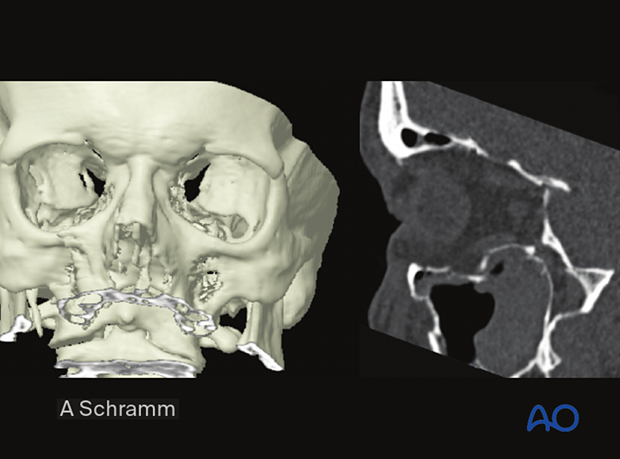
Virtual reduction
Virtual simulation of the zygoma reduction is performed by mirroring the unaffected left zygoma after auto segmentation. The yellow line shows the outer surface of the virtually repositioned zygoma and becomes the surgical goal for reduction.
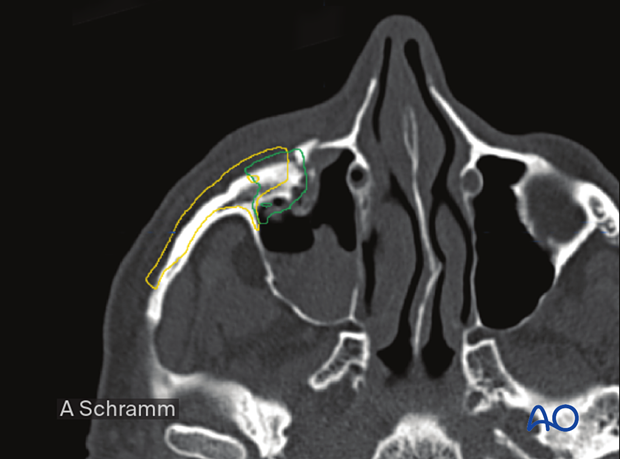
Virtual orbital wall reconstruction is shown in green. This was achieved by mirroring the unaffected contralateral side after auto segmentation.
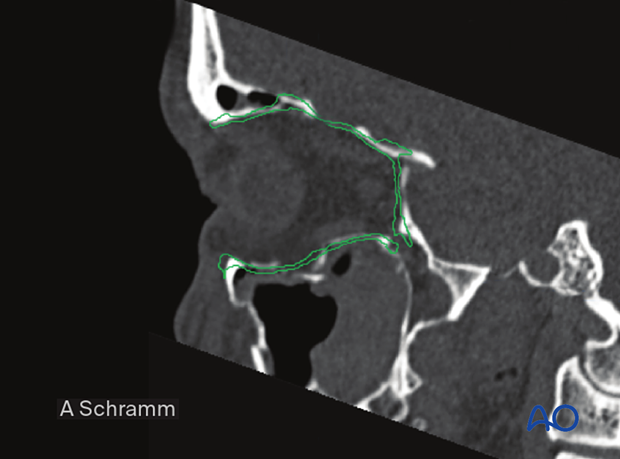
3. Intraoperative assessment of reduction
A CT scan is performed intraoperatively to verify that the zygoma has been adequately reduced.
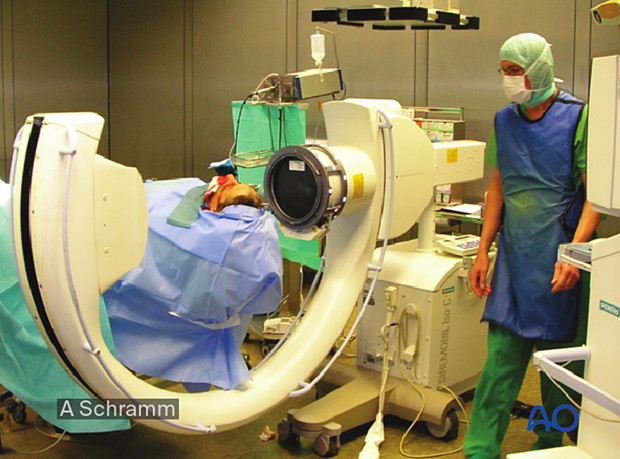
Virtual planning software allows automatic image fusion of preoperative and intraoperative CT scans and the virtual plan to better visualize the achieved reduction.
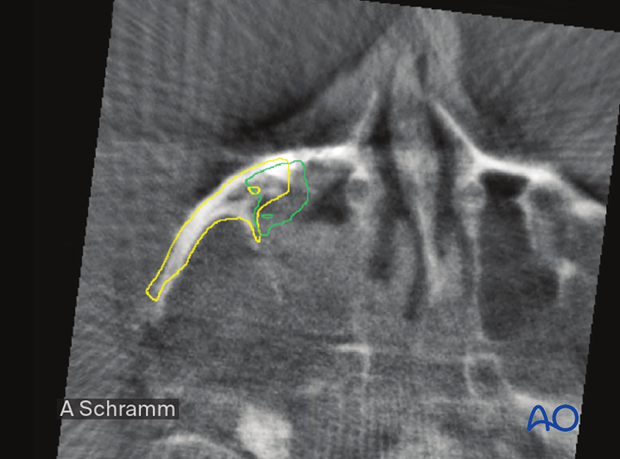
The correct anatomic shape of the orbital floor can be verified after zygoma reduction in the intraoperative CT scan when virtual reconstruction in the preoperative CT scan is transferred to the intraoperative scan via image fusion. Note how, after zygoma reduction, the orbital floor perfectly fits in the planned position (green). This confirms that there is no need for orbital wall reconstruction in this case.
Due to intraoperative visualization using a 3D C-arm after zygoma reduction, unnecessary orbital reconstructions can be avoided.
If the orbital floor is not adequately reduced, orbital reconstruction is recommended.
